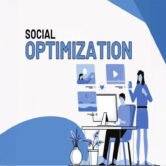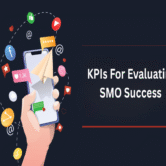
Explain content strategy alignment with IT services
Introduction
In today’s highly competitive digital ecosystem, IT service providers must go beyond technical excellence to differentiate themselves. One of the most effective ways to build visibility, trust, and engagement is through content marketing. However, random or unstructured content creation delivers limited results. This is why aligning content strategy with IT services is essential. When content strategy is directly mapped to IT offerings, business goals, and client pain points, it drives more qualified traffic, nurtures leads, and supports long-term growth. This alignment ensures that content not only informs but also converts, positioning the IT firm as a credible thought leader and trusted solution provider.
Understanding content strategy in the IT context
A content strategy is a comprehensive plan that governs the creation, management, delivery, and measurement of content. In the IT services industry, content strategy must align with core offerings such as managed services, cloud solutions, cybersecurity, application development, or IT consulting. It should be audience-centric, addressing the specific needs of CIOs, IT managers, decision-makers, and technical teams. The content must reflect both industry trends and business-specific challenges to remain relevant and authoritative.
Mapping content to IT service offerings
Alignment starts by identifying all service areas offered by the IT company—whether it’s network infrastructure, DevOps, software development, or enterprise security—and then crafting content that supports each. For example, a company providing cloud migration services should develop blogs, whitepapers, and case studies on cloud readiness, platform selection, migration best practices, and post-migration support. Each content piece should directly tie back to a service area, demonstrating expertise and encouraging further engagement or inquiry.
Tailoring content to different buyer personas
The IT sales cycle often involves multiple stakeholders—from technical analysts to C-level executives. A successful content strategy addresses each of these personas at various stages of the buyer’s journey. Technical stakeholders may seek detailed product specifications or integration guides, while business leaders prefer ROI-focused whitepapers or use-case-driven webinars. Aligning content with these personas ensures relevance and effectiveness, helping move prospects from awareness to decision-making with confidence.
Aligning with the customer journey
Each stage of the IT buyer journey—awareness, consideration, and decision—requires different content formats and messaging. At the awareness stage, thought leadership articles and explainer videos introduce challenges and solutions. During consideration, product comparison guides, webinars, and demos provide deeper insights. In the decision stage, case studies, customer testimonials, and pricing guides help finalize choices. Structuring content around the journey ensures continuous engagement and increased lead conversion.
Incorporating SEO and technical language
For IT services, search engine optimization (SEO) must strike a balance between keyword relevance and technical accuracy. A well-aligned content strategy incorporates industry-specific terms and long-tail keywords that potential clients actually use. Topics like “cloud-native application development” or “endpoint security compliance” must be explained in a way that satisfies both search intent and technical expectations. Proper SEO ensures content is discoverable, while precision in language builds credibility.
Leveraging data-driven insights and analytics
Effective content strategy alignment relies on analytics to guide decision-making. Metrics such as bounce rate, time on page, click-through rate, and lead generation help determine what types of IT-related content resonate with the target audience. Regular performance reviews and A/B testing provide insights into which topics, formats, and distribution channels deliver the best results. This data-driven approach allows continuous refinement of content to better support business objectives and client needs.
Using content to demonstrate expertise and build trust
For IT service providers, credibility is crucial. Content becomes a powerful tool to establish thought leadership and build trust with prospective clients. Publishing expert-led content such as technical blogs, industry reports, how-to videos, and whitepapers showcases the firm’s knowledge and problem-solving capabilities. When this content aligns with service offerings, it reinforces the value proposition and encourages prospects to consider the brand as a solution provider.
Integrating content across digital channels
A strong content strategy ensures that messaging is consistent and aligned across all digital platforms—website, email newsletters, LinkedIn, YouTube, and more. For IT services, LinkedIn articles, technical webinars, and explainer videos are particularly effective. Repurposing blog content into infographics or short video clips helps extend reach and appeal to various content consumption preferences. Cross-channel integration ensures that IT service messaging remains cohesive and accessible wherever the audience is active.
Collaborating between marketing and IT teams
One of the keys to successful alignment is collaboration. Marketing teams need insights from technical staff to produce accurate, valuable content, while IT experts benefit from marketers’ knowledge of audience engagement. Joint efforts help bridge the gap between complex service details and market-facing language. Internal interviews, knowledge-sharing sessions, and co-creation models enhance the content’s authenticity and effectiveness.
Adapting content for evolving IT trends
The technology landscape evolves rapidly, and so should your content. An aligned content strategy incorporates flexibility to adapt to changes such as emerging AI tools, shifts in cloud architecture, cybersecurity threats, or updates in compliance standards. Publishing timely insights on these topics positions the brand as current and forward-thinking. Regular content audits and updates ensure your messaging reflects the latest trends and innovations in IT.
Conclusion
Aligning content strategy with IT services ensures that every piece of content delivers value not just to the audience, but also to the business. It transforms content into a strategic asset that supports lead generation, nurtures relationships, and demonstrates expertise. When planned and executed effectively, aligned content becomes a powerful channel for educating prospects, differentiating from competitors, and accelerating growth. For IT service providers seeking long-term impact, content strategy alignment is not optional—it is a strategic imperative.
Hashtags
#contentstrategy #ITservicesmarketing #digitalcontentalignment #B2Bcontentstrategy #contentforIT #managedservicescontent #cybersecuritymarketing #ITleadgeneration #techcontentmarketing #ITbuyerjourney #technicalcontent #strategiccontentplanning #digitalmarketingforIT #contentdistribution #SEOfortech #thoughtleadership #contentmetrics #contentperformance #contentROI #contentandtechcollaboration #marketingandITalignment #contentdrivenITgrowth #enterpriseITcontent #inboundmarketingforIT #moderncontentstrategy





